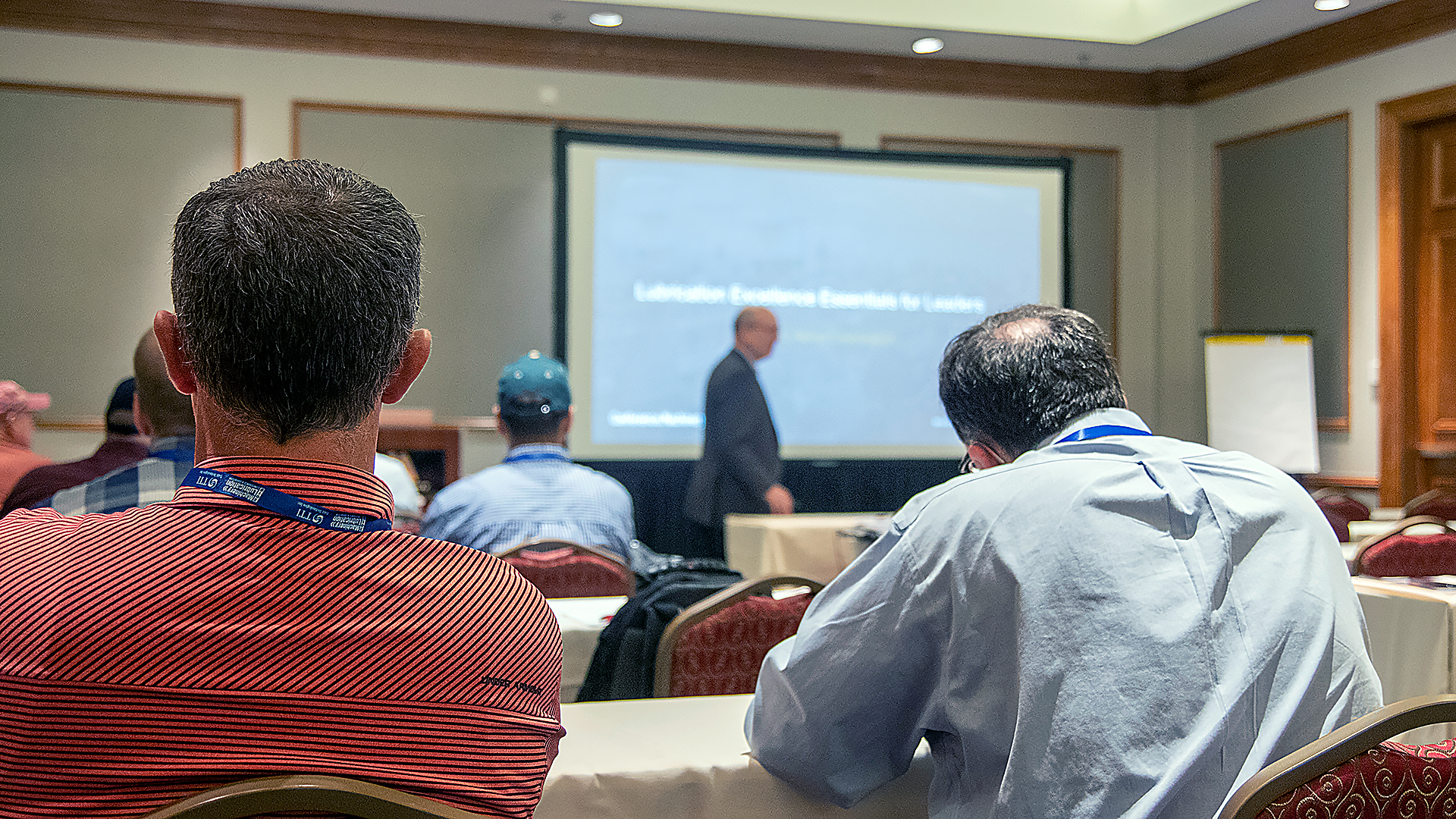Industrial Lubrication Fundamentals
An introduction to the best practices in lubrication
Industrial Lubrication Fundamentals is an introduction to optimal lubrication practices, which covers the common activities of a lubrication technician. This training is considered to be a key component to support a lubrication excellence program. This interactive course uses a variety of activities and media to provide the lube technician with the technical knowledge and methodologies of lubrication excellence, which enhance their competencies to execute qualified lubrication duties.
Course Availability
ILF Course Overview
- Course Duration: 2-3 days
- Prerequisites: None (Who should attend?)
- Course Flyer: Download (PDF)
Variable Pricing
Per Company

Types of equipment covered
- Gearboxes
- Hydraulic Systems
- Electric Motors
- Compressors
- Final Drives
- Diesel Engines
- Paper Machines
- Process Pumps
- Steam Turbines
- Gas Turbines
- Blowers/Fans
- Rolling Mills
- Hydrostatic Transmissions
- And more!
Lubrication Training Focus on Everyday Lubrication Tasks
While students will learn some of the basics of lubricants in this course, the main purpose of the training is focused on the best practices of lubrication-related tasks. The learning objectives of this training relate to:
- Lubricating Machinery
- Receiving and Inspecting New Lubricants
- Maintaining Lube Rooms
- Sampling Lubricants
- Filtration and Contamination Control
- Inspecting Lubricants and Machines
Designed to Impact Performance
This course has been developed following a systematic approach which identified the learning needs for lubrication professionals. We met with industry experts and plant reliability professionals to determine the specific skills needed to perform lubrication tasks. These needs were analyzed to guide the development of the instructional materials and methodologies used during this course.
This course has been designed to create a learning environment which supports adult learning principles to maximize the transfer of the course knowledge to the student. Specific features include interactive exercises, case studies, and hands on examples as well as class discussions conducted through a facilitative approach.
Who should attend?
Unlike Noria’s Certification Series training courses, this training is designed for those who have little technical background and need training on lubrication and filtration tasks. Students will learn why proper lubrication is important and how to protect machinery through contamination control. The training is very interactive and includes student participation.
Job Title or Role |
Top Benefit |
|---|---|
| Lube Tech (Lubrication Technician) | Learn best practices for daily tasks |
| Inspector | Uncover more actionable insights |
| PdM Technician, Reliability Engineer, Maintenance Engineer | Improve data-driven decision-making |
| Reliability Manager, Maintenance Manager | Identify program gaps and opportunities |
Learn from expert instructors
Gain valuable knowledge from these industry experts
Reviews from students
Contact a Noria expert today
Other courses you may be interested in
-
Machinery Lubrication I
ML I provides the foundation of lubrication knowledge. Learn proven industry methods for selecting, storing, filtering and testing lubricants to boost reliability and generate lasting results in machine efficiency/maintenance.
-
Task-Based Training
Get 90 days of access to Task-Based Training designed to help onboard new operators or align your teams to expert-backed best practices.




